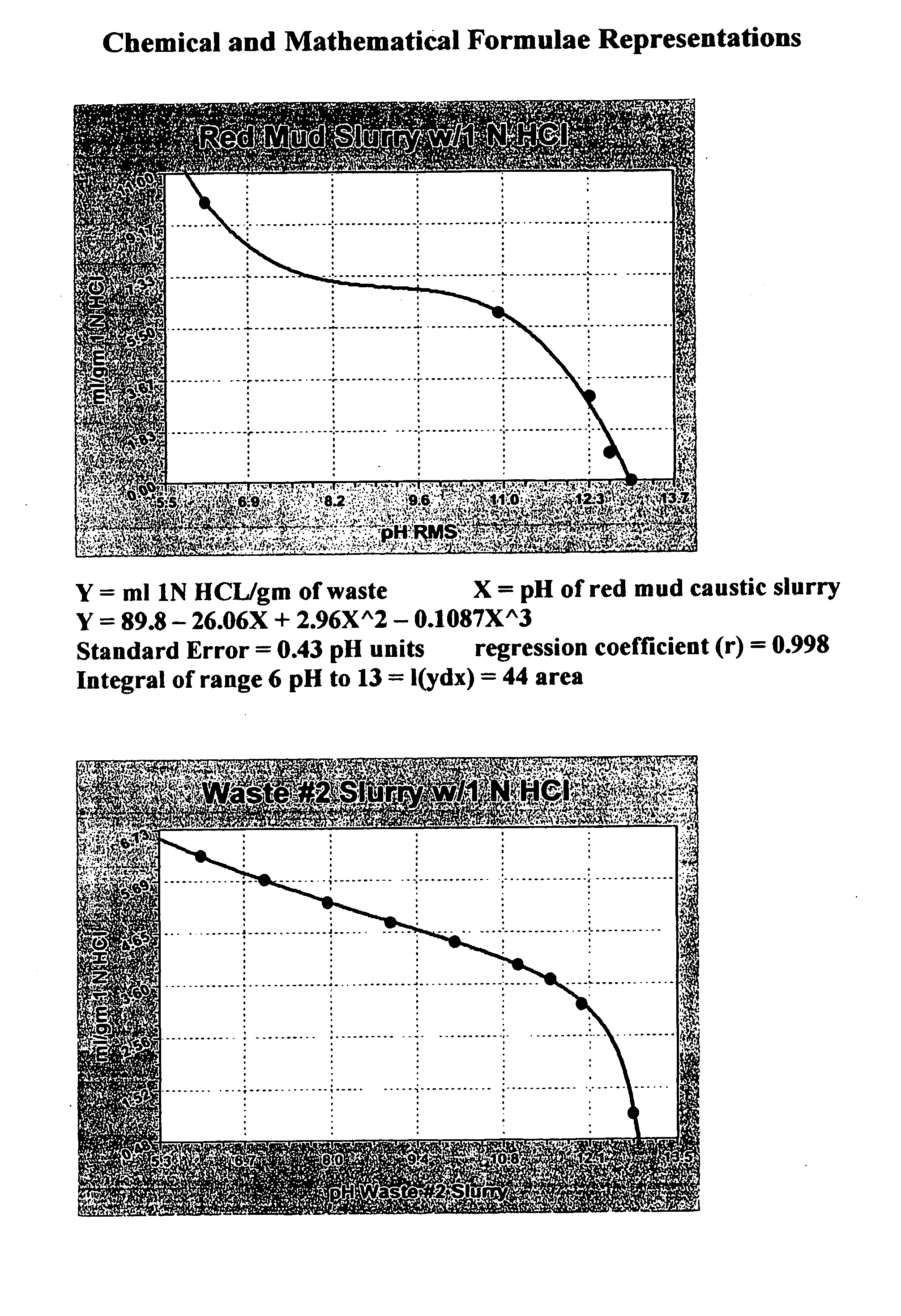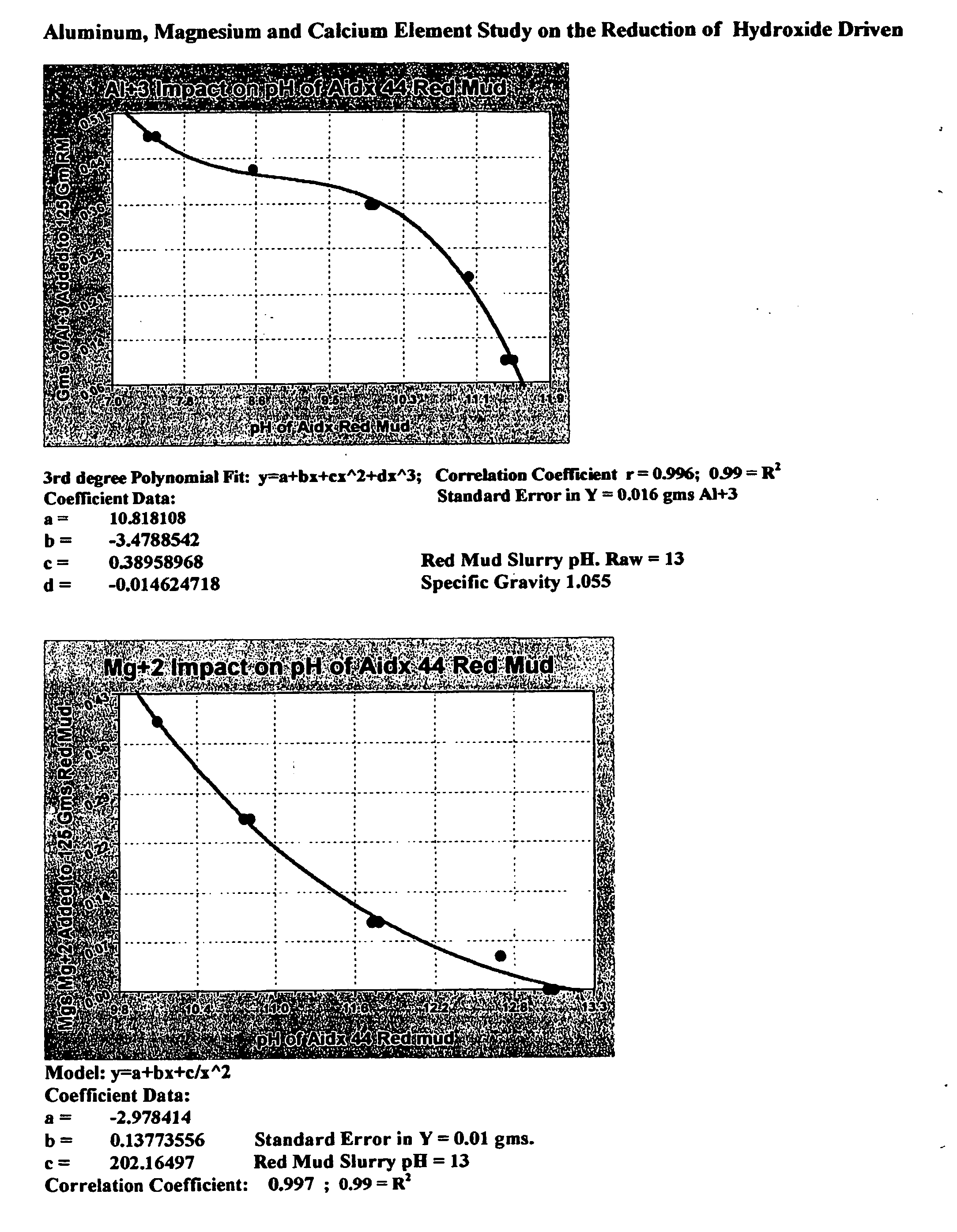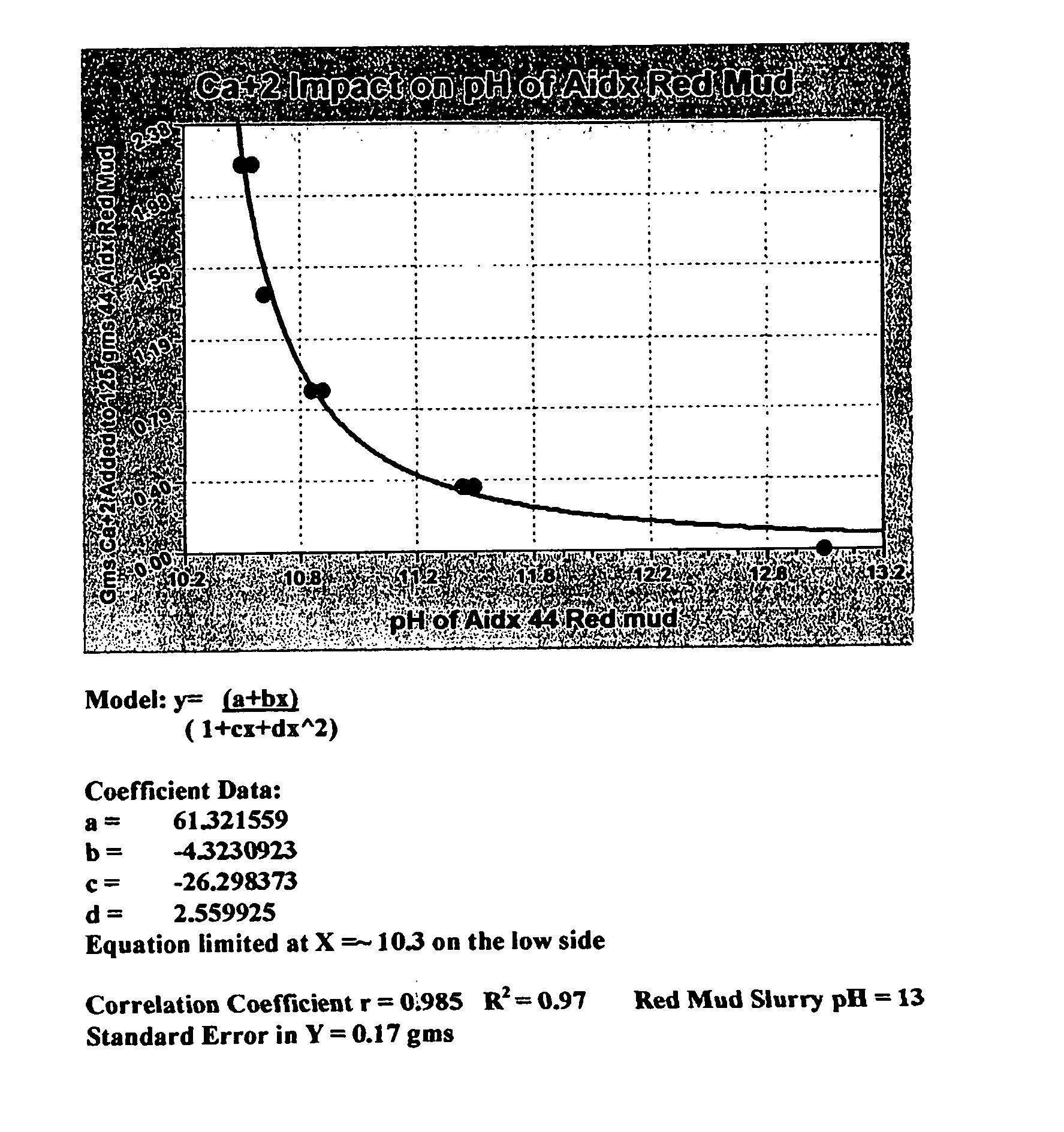Double replacement cation neutralization of high alkalinity waste materials
a technology of cation neutralization and waste materials, applied in the direction of neutralization of water/sewage, aluminum compounds, chemistry apparatus and processes, etc., can solve the problems of short delay, reduce the ph of the material to approximately its final ph, and achieve economic and environmental benefits, reduce the increase in mass and/or volume of the “red mud” and save the long term storage
- Summary
- Abstract
- Description
- Claims
- Application Information
AI Technical Summary
Benefits of technology
Problems solved by technology
Method used
Image
Examples
Embodiment Construction
.S. Pat No. 4,913,835
[0004] The compositions of this invention preferably contain between about 45% and about 80% by weight of organic neutralizing acid in a dry particulate form such as citric acid, fumaric acid, tartaric acid or benzoic acid, between about 5% to about 45% by weight of a highly absorptive clay such as attapulgite, perlite, fullers earth or Minugel.RTM. and the like, optionally between about 10% to about 45% by weight of less absorptive clay, such as attapulgus clay and the like and between about 0.5% and about 10% by weight of a water soluble weak acid salt such as sodium dihydrogen phosphate, magnesium stearate, tricalcium phosphate, aluminum octoate, sodium stearate, monosodium salt of dimethyl naphthalene sulfonate, sodium polyacrylate, and the like.
U.S. Pat. No. 5,246,596, N. K. Murray, P. N. Baldwin, Jr. Sep. 21, 1993:
Abstract of U.S. Pat. No. 5,246,596
[0005] Disclosed is a method for processing waste to render it fit for ultimate disposal. The method compr...
PUM
| Property | Measurement | Unit |
|---|---|---|
| temperature | aaaaa | aaaaa |
| temperature | aaaaa | aaaaa |
| temperature | aaaaa | aaaaa |
Abstract
Description
Claims
Application Information
 Login to View More
Login to View More - R&D
- Intellectual Property
- Life Sciences
- Materials
- Tech Scout
- Unparalleled Data Quality
- Higher Quality Content
- 60% Fewer Hallucinations
Browse by: Latest US Patents, China's latest patents, Technical Efficacy Thesaurus, Application Domain, Technology Topic, Popular Technical Reports.
© 2025 PatSnap. All rights reserved.Legal|Privacy policy|Modern Slavery Act Transparency Statement|Sitemap|About US| Contact US: help@patsnap.com



